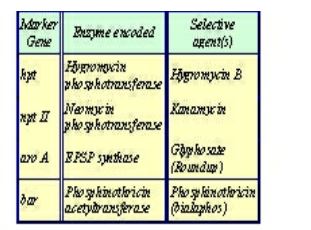Advanced Biotech Miscellaneous
- Match the following marker genes in group 1 with suitable selecting agent in group 2
Group 1 Group 2 P. npt II 1. Glyphosate Q. aroA 2. Phosphinothricin R. hpt 3. Kanamycin S. bar 4. Hygromycin B
-
View Hint View Answer Discuss in Forum

Correct Option: D

- Gynogenesis is a process of development of haploid plants
-
View Hint View Answer Discuss in Forum
A form of asexual reproduction related to parthenogenesis is gynogenesis. Here, offspring are produced by the same mechanism as in parthenogenesis, but with the requirement that the egg merely be stimulated by the presence of sperm in order to develop. However, the sperm cell does not contribute any genetic material to the offspring. Since gynogenetic species are all female, activation of their eggs requires mating with males of a closely related species for the needed stimulus.
Correct Option: B
A form of asexual reproduction related to parthenogenesis is gynogenesis. Here, offspring are produced by the same mechanism as in parthenogenesis, but with the requirement that the egg merely be stimulated by the presence of sperm in order to develop. However, the sperm cell does not contribute any genetic material to the offspring. Since gynogenetic species are all female, activation of their eggs requires mating with males of a closely related species for the needed stimulus.
- Oils rich in PUFA are NOT desirable for bio-diesel production because
-
View Hint View Answer Discuss in Forum
PUFAs are long-chain fatty acids containing two or more double bonds.
They provide structural & functional characteristics, and are involved in a wide range of biological components including membranes (in phospholipids). Equally important PUFAs serve as precursors for conversion into metabolites that regulate critical biological functions.Biodiesel is a non-petroleum and environmentally-friendly alternative to petroleum-based diesel fuel and not fatty acid.PUFA is fatty acid it is not used as it forms epoxide in presence of oxygen.Correct Option: A
PUFAs are long-chain fatty acids containing two or more double bonds.
They provide structural & functional characteristics, and are involved in a wide range of biological components including membranes (in phospholipids). Equally important PUFAs serve as precursors for conversion into metabolites that regulate critical biological functions.Biodiesel is a non-petroleum and environmentally-friendly alternative to petroleum-based diesel fuel and not fatty acid.PUFA is fatty acid it is not used as it forms epoxide in presence of oxygen.
- Plant secondary metabolites
-
View Hint View Answer Discuss in Forum
Secondary metabolites often play an important role in plant defense against herbivory and other interspecies defenses. Humans use secondary metabolites as medicines, flavorings, and recreational drugs.
Correct Option: C
Secondary metabolites often play an important role in plant defense against herbivory and other interspecies defenses. Humans use secondary metabolites as medicines, flavorings, and recreational drugs.
- Protein binding regions of DNA are identified by one of the following techniques
-
View Hint View Answer Discuss in Forum
DNA footprinting is a method of investigating the sequence specificity of DNA-binding proteins in vitro. This technique can be used to study protein-DNA interactions both outside and within cells. The regulation of transcription has been studied extensively, and yet there is still much that is not known. Transcription factors and associated proteins that bind promoters, enhancers, or silencers to drive or repress transcription are fundamental to understanding the unique regulation of individual genes within the genome. Techniques like DNA footprinting will help elucidate which proteins bind to these regions of DNA and unravel the complexities of transcriptional control.
Correct Option: B
DNA footprinting is a method of investigating the sequence specificity of DNA-binding proteins in vitro. This technique can be used to study protein-DNA interactions both outside and within cells. The regulation of transcription has been studied extensively, and yet there is still much that is not known. Transcription factors and associated proteins that bind promoters, enhancers, or silencers to drive or repress transcription are fundamental to understanding the unique regulation of individual genes within the genome. Techniques like DNA footprinting will help elucidate which proteins bind to these regions of DNA and unravel the complexities of transcriptional control.

